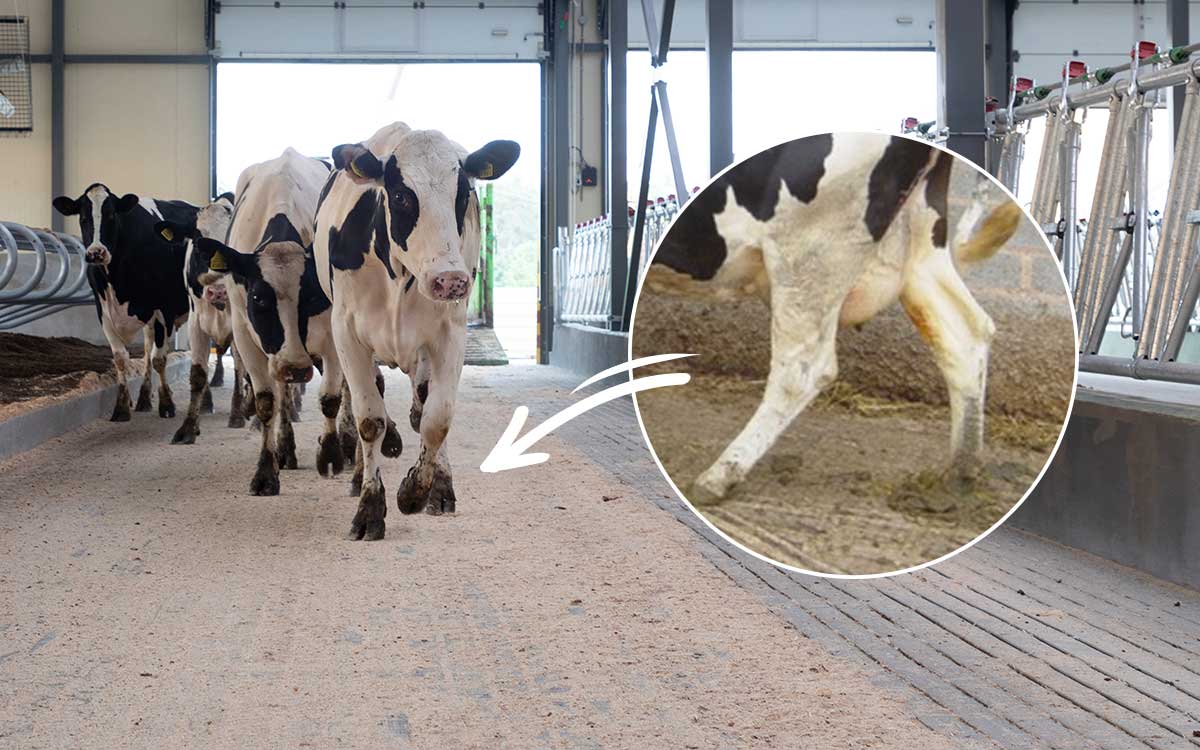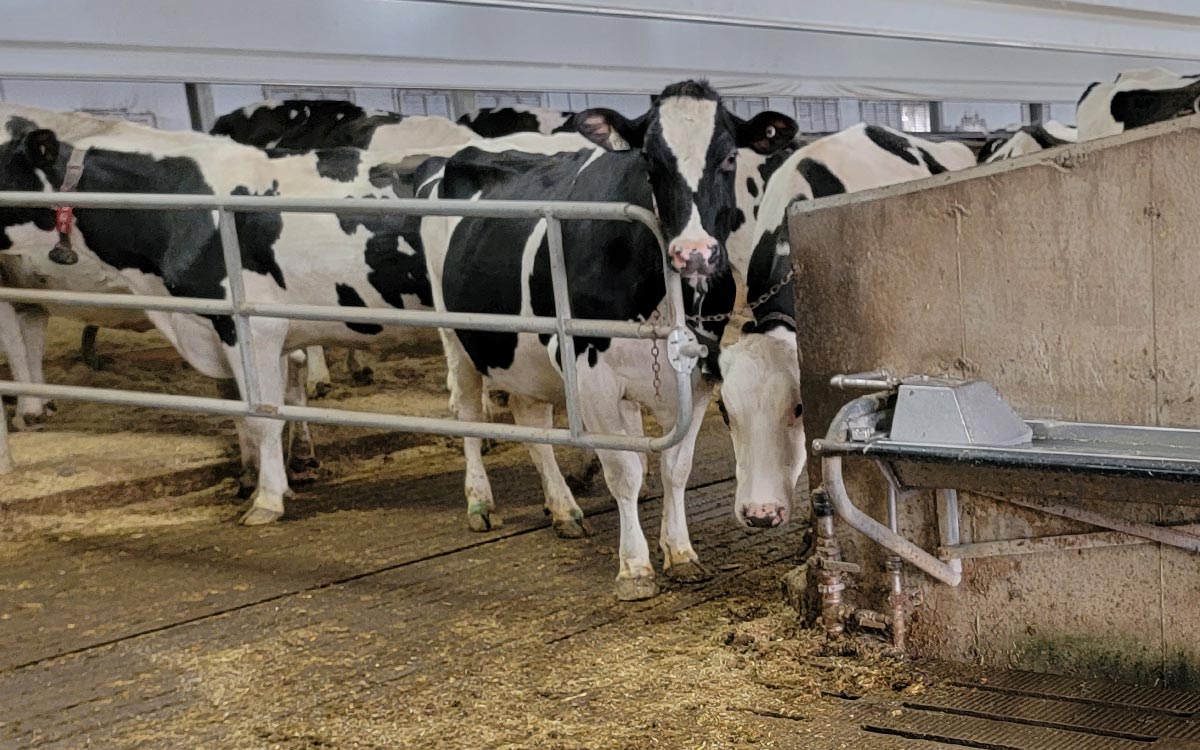Table of Contents
Lameness is a significant issue that affects dairy farms worldwide. Not only does it cause discomfort and pain to cows, but it also has a negative impact on farm profitability. However, with the right strategies in place, dairy farmers can effectively reduce lameness and improve the overall well-being of their herd. In this article, we will explore some effective strategies for reducing lameness on dairy farms and discuss the economic impact of this issue.
Three key strategies, Ambition, Analytics, and Attentive Action, form the foundation for reducing lameness. Ambition involves commitment and consistent efforts. Analytics aid in identifying trends and risks. Attentive Action entails timely treatment, akin to prompt wound care.
Table of Contents
Strategies for Reducing Lameness on Dairy Farms
Lameness can be a complex problem to tackle, but with Ambition, Analytics, and Attentive Action, dairy farmers can make a significant difference. Let’s delve into these three key strategies.
The Triple-A: Ambition, Analytics, and Attentive Action
When it comes to reducing lameness on dairy farms, ambition and action are crucial. Farmers must be committed to implementing the necessary changes and consistently following the strategies outlined. It’s like training your muscles in the gym; you can only expect results with dedication and perseverance.
Additionally, analytics and bench-marking play a vital role in addressing lameness issues. Farmers can identify trends, patterns, and potential risk factors by closely monitoring and analyzing data related to hoof health. It’s like peering into a crystal ball – the data reveals valuable insights that can guide proactive decision-making.
In our article about The Case for Keeping Hoof Trimming Records the importance of record keeping is explained and we also provide you various tool suggestions to get the job done.
Attentive and focused action is another essential aspect of lameness reduction. Providing timely and effective treatment to lame cows can significantly improve their recovery and prevent the spread of lameness within the herd. It’s like treating a wound promptly; the faster the treatment, the better the outcome.
But let’s not stop there. Some other strategies and approaches can further enhance the efforts to reduce lameness on dairy farms. Let’s explore some of these additional strategies.
How a Zero-Lameness-Tolerance Policy Can Make a Difference
Implementing a no-lameness-tolerance policy on dairy farms can profoundly impact the herd’s overall well-being. Just like implementing a zero-tolerance policy for workplace safety hazards, a no-lameness-tolerance policy sets a clear standard and expectation for hoof health. It sends a message that lameness is unacceptable and motivates everyone involved to work towards its prevention.
Its a few years back that a dairy farmer called our office and needed some suggestions about reducing lameness. He shared that he has a initiative plan in place for his employees. For any lame cow they find and treat, they receive a kickback per cow. This is a win-win for everyone!
Such a policy can help create a culture of accountability and encourage proactive measures to identify and address lameness risk factors. It’s like building a strong foundation for a house; a solid goal ensures that every effort is made to prevent lameness right from the start.
But how can this policy be effectively implemented and enforced? Let’s dive deeper into the steps involved in establishing a no-lameness-tolerance policy.
The Power of Data Reports in Addressing Lameness Issues
Data reports can be invaluable tools in the fight against lameness on dairy farms. These reports compile various metrics related to hoof health, including lameness prevalence, hoof lesion types, and treatment outcomes. It’s like having a roadmap that highlights problem areas and guides decision-making. We have built a print-friendly and Google sheet version of the trimming record sheet, which is a free download.
By analyzing these reports, farmers can identify trends, assess the effectiveness of implemented strategies, and make informed adjustments if necessary. It’s like adjusting the course of a ship in response to changing weather conditions; data reports provide the insights required to steer the farm toward improved hoof health.
But what specific metrics should farmers focus on when analyzing these data reports? Let’s explore some key indicators that can provide valuable insights into lameness issues on dairy farms.

Record Keeping Worksheet
Practical Actions for Lame Cows
When it comes to treating lame cows, daily and immediate treatment is critical for success. Farmers should develop a treatment plan in consultation with a veterinarian and ensure it is followed consistently. This plan may include hoof trimming, hoof spraying, foot bathing, and supportive treatments with wraps or blocks. It’s like providing personalized care for each lame cow; tailored treatment maximizes their chances of recovery.
Creating a dedicated treatment area where cows can receive individual attention and care is also essential. This area should be clean, well-maintained, and equipped with the necessary tools and supplies. It’s like having a designated first-aid station on the farm; a dedicated treatment area streamlines the treatment process and keeps it efficient.
But what additional measures can be taken to enhance the effectiveness of daily treatment for lame cows? Let’s explore some innovative approaches and technologies that can revolutionize the treatment of lameness on dairy farms.
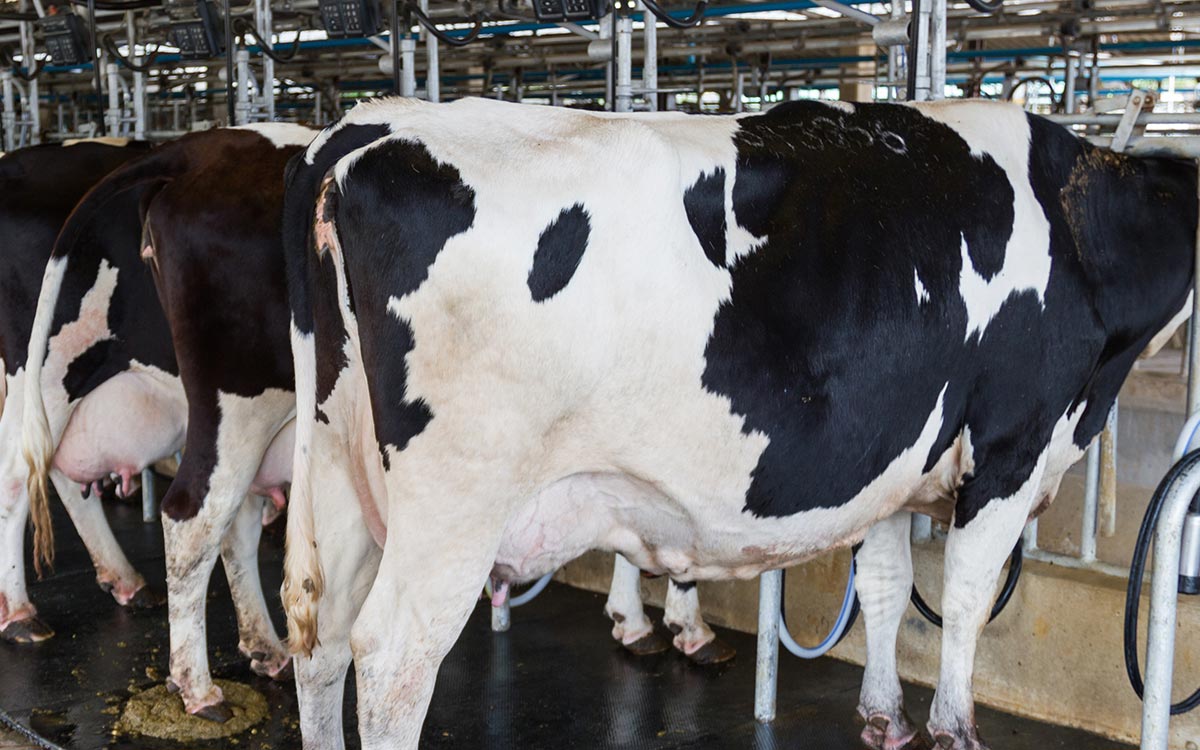
Implementing Best Practices for Lameness Prevention
Prevention is always better than cure, and this holds true for reducing lameness on dairy farms. Farmers can minimize the risk factors by implementing best practices and promoting hoof health within their herds. Let’s explore some key practices in more detail.
Lameness in dairy cows can significantly impact their overall well-being and productivity. It can lead to decreased milk production, reproductive issues, and premature culling. Therefore, farmers must prioritize the prevention of lameness through proper management and care.
Proper Hoof Care and Trimming Techniques
Proper hoof care and regular trimming are essential for maintaining hoof health. Like cutting our nails, trimming cow hooves helps prevent excessive growth, reduces the risk of injury, and ensures proper weight distribution. Farm workers should be trained in correct trimming techniques and have access to high-quality trimming tools.
Farmers should establish a routine hoof care schedule to ensure that each cow receives regular attention.
This schedule should consider factors such as the cow’s age, breed, and overall hoof condition. It’s like following a dental hygiene routine; regular care prevents problems from escalating.
Farmers should also inspect the hooves during hoof trimming sessions for any signs of lameness or hoof diseases. Early detection and prompt treatment can prevent the condition from worsening and minimize its impact on the cow’s well-being.
The Role of Nutrition in Reducing Lameness
Nutrition plays a critical role in hoof health and can significantly impact lameness prevalence. Like the saying, “You are what you eat,” cows need a balanced diet that meets their nutritional requirements. Farmers should work closely with animal nutritionists to develop appropriate feed formulations and meet the herd’s nutritional needs.
Specific nutrients, such as biotin, zinc, and copper, are essential for hoof health. Including these nutrients in the cow’s diet can promote hoof growth and strength. Additionally, maintaining the right balance between energy and protein in their diet is crucial for overall cow health and hoof condition.
Regularly monitoring the cow’s body condition score (BCS) is also essential. An optimal BCS indicates that the cow receives adequate nutrition, indirectly contributing to hoof health. The diet can be adjusted based on the BCS to ensure that the cows are getting the right amount of nutrients.
Creating Comfortable Housing for Cows
The housing environment can significantly affect hoof health. Cows should have access to clean and comfortable bedding, ample space to move around, and well-designed flooring that provides proper traction. A comfortable and well-maintained housing environment reduces stress on the cow’s hooves and minimizes the risk of injuries. Our interview with Agri-traction provides insights into the proper way to optimize floors for dairy cows.
Proper ventilation is also crucial in preventing hoof problems. Good air quality helps prevent the buildup of moisture and ammonia, which can lead to hoof infections and diseases. Farmers should ensure the housing facilities have adequate ventilation systems to maintain optimal air quality.
Furthermore, regular cleaning and maintenance of the housing facilities are crucial. Proper manure management and hygiene practices help reduce the risk of hoof infections and increase overall hoof health. It’s like keeping our living spaces clean to prevent the spread of germs. Regularly removing manure in the alleyways and ensuring that the bedding remains dry and clean can significantly contribute to hoof health.
Implementing best practices for lameness prevention is essential for maintaining dairy cows' overall health and well-being.
Proper hoof care, nutrition, and comfortable housing are all crucial components of a comprehensive lameness prevention program. By prioritizing these practices, we can minimize lameness prevalence, improve cow welfare, and optimize their herd’s productivity.
The Economic Impact of Lameness on Dairy Farms
Lameness affects animal welfare and has a significant economic impact on dairy farms. Let’s look at how lameness can impact farm profitability and why investing in lameness reduction strategies is crucial.
Regarding the costs associated with lameness, the implications can be substantial. Beyond the direct expenses of treatment and medication, lameness can have far-reaching consequences. For instance, it can reduce milk production, directly affecting the farm’s bottom line. Cows with lameness issues may not be able to graze (or spend time at the feed bunk in your barn) or move as freely, resulting in lower milk yields. This decrease in production can have a significant financial impact on the farm’s profitability.
In addition to reduced milk production, lameness can decrease fertility rates. Cows in pain or discomfort may have difficulty showing heat, conceiving or maintaining a pregnancy. Hoof challenges can lead to longer calving intervals and reduced overall reproductive efficiency. As a result, the farm may experience delays in replenishing its herd, leading to decreased milk production and potential revenue loss.

Lameness can increase culling rates. Cows that suffer from chronic lameness may become unproductive or have a higher risk of developing other health issues. In such cases, farmers may have no choice but to cull these animals from the herd. These unfortunate choices incur additional costs and reduce the herd’s overall size, potentially impacting the farm’s ability to meet milk production targets and satisfy market demand.
Managing and treating lame cows also requires additional labour and resources. Farm workers need to dedicate time and effort to identify, isolate, and provide appropriate care for these animals. This increased workload can strain the farm’s resources and impact overall operational efficiency. Additionally, the cost of veterinary services, medications, and hoof care products can quickly add up, further contributing to the economic burden of lameness.

To truly understand the financial implications of lameness, farmers need to calculate the actual cost of lameness on their farms. This involves analyzing the various factors mentioned above and considering the farm’s individual circumstances and management practices. By conducting a thorough financial analysis, we gain a clear understanding of how lameness affects their profitability and make informed decisions regarding lameness reduction efforts.
Investing in strategies to prevent and manage lameness can positively impact farm profitability. By implementing measures such as regular hoof trimming, maintaining clean and comfortable housing conditions, and providing proper nutrition, farmers can minimize the occurrence of lameness and its associated costs.
Reducing lameness not only helps to minimize treatment costs but also optimizes milk production. Healthy cows are more likely to reach their full potential in terms of milk yield, contributing to increased revenue for the farm. Cows that are free from lameness are more likely to exhibit better fertility rates, allowing for more efficient breeding and shorter calving intervals.
Farmers can decrease culling rates and improve overall herd performance by reducing lameness. Healthy cows are less likely to be culled due to unproductivity or chronic health issues, ensuring a larger and more productive herd. This can help meet milk production targets and maintain a steady revenue stream.

Healthier cows require fewer resources for treatment and have a lower risk of developing chronic conditions. By investing in preventive maintenance and supporting hoof health early on, farmers can save valuable time, money, and resources in the long run. This proactive approach not only benefits the individual cow but also contributes to the overall sustainability and profitability of the farm.
In conclusion, lameness has a significant economic impact on dairy farms. The costs associated with lameness can be substantial, affecting milk production, fertility rates, culling rates, and overall operational efficiency. However, by implementing effective lameness reduction strategies, farmers can mitigate these costs and improve farm profitability. Investing in preventive measures and prioritizing hoof health is beneficial not only for the welfare of the animals but also for the long-term success of the dairy farm.
Training and Education for Lameness Management
Effective lameness management requires training and education. Let’s explore two essential aspects that can significantly contribute to lameness reduction on dairy farms.
Identifying Early Signs of Lameness
Early identification of lameness is crucial for timely intervention and improved treatment outcomes. Farmers and farmworkers should undergo training programs that focus on recognizing the early signs of lameness, such as changes in gait, abnormal hoof wear, and increased lying time. It’s like learning to spot weeds in a field; early detection allows for targeted action and prevents lameness from spreading.
Regular monitoring of cow behaviour, maintaining accurate records, and conducting routine hoof health assessments can also aid in identifying early signs of lameness. It’s like using a magnifying glass to examine a plant for any signs of disease or pests; close observation helps catch lameness in its early stages.
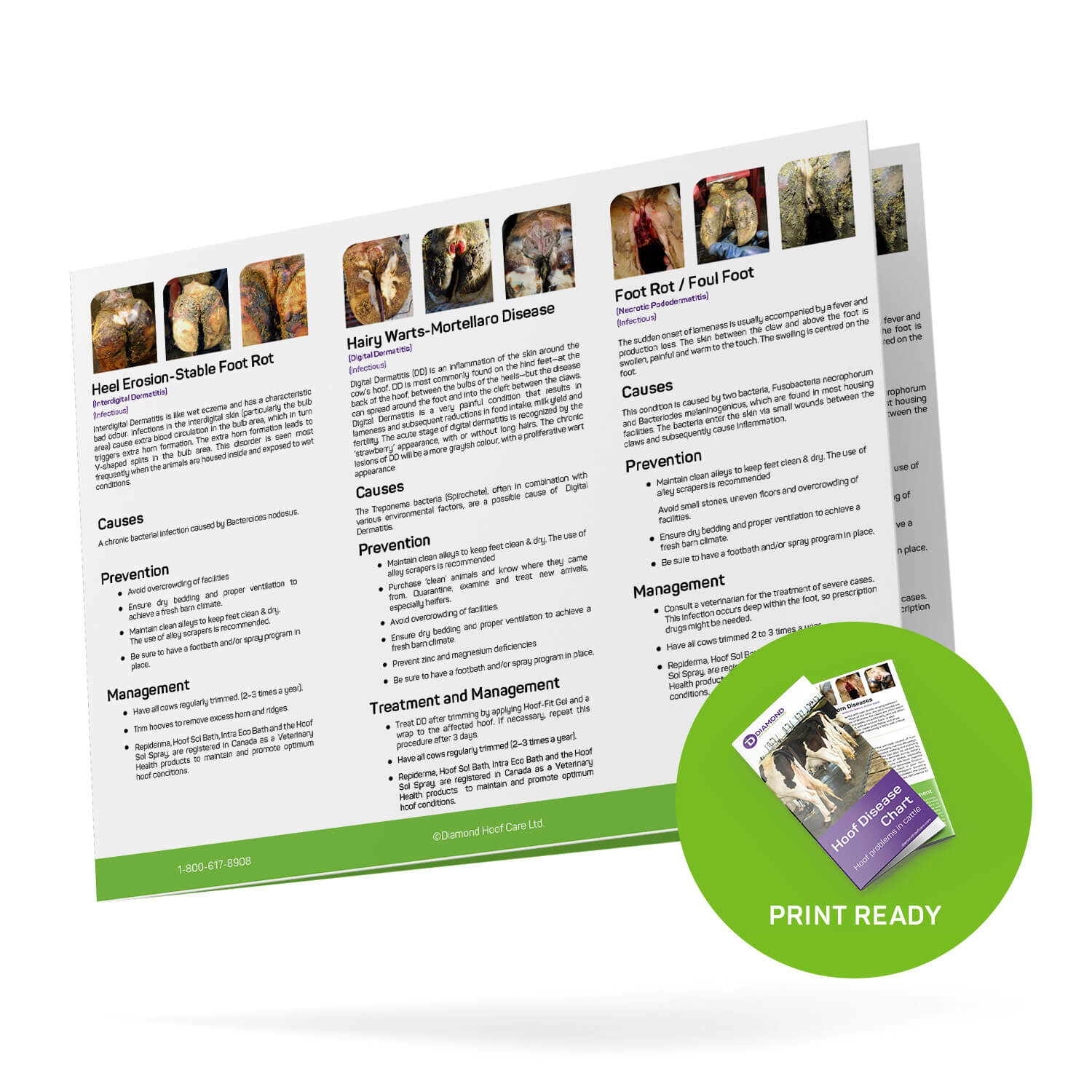
Hoof Disease Reference Chart
Furthermore, training programs can provide in-depth knowledge of the different causes of lameness, including hoof infections, injuries, and nutritional imbalances. Understanding these underlying factors can empower farmers and farmworkers to take proactive measures to prevent lameness before it becomes a widespread issue.
Training Employees on Lameness Prevention Techniques
Farm employees play a critical role in implementing lameness prevention strategies. Training programs should be designed to educate farm workers on best practices for preventing lameness, implementing proper hoof care, conducting regular assessments, and administering treatments effectively. It’s like equipping soldiers with the tools and skills to win a battle; well-trained employees are essential for successful lameness prevention efforts.
Collaborating with veterinarians can provide valuable insights and guidance in developing employee training programs. It’s like seeking expert advice when embarking on a new farming venture; veterinarians bring specialized knowledge and experience to the table. In our article Hoof Trimmers and Veterinarians Can Work Better Together, the collaboration between the two professions is explained.
Moreover, training programs can delve into the importance of maintaining a clean and hygienic environment for the cows. This includes proper manure management, regular stall cleaning, and ensuring adequate ventilation in the barn. By addressing these factors, farmers can create a conducive environment that minimizes the risk of lameness and promotes overall cow well-being.
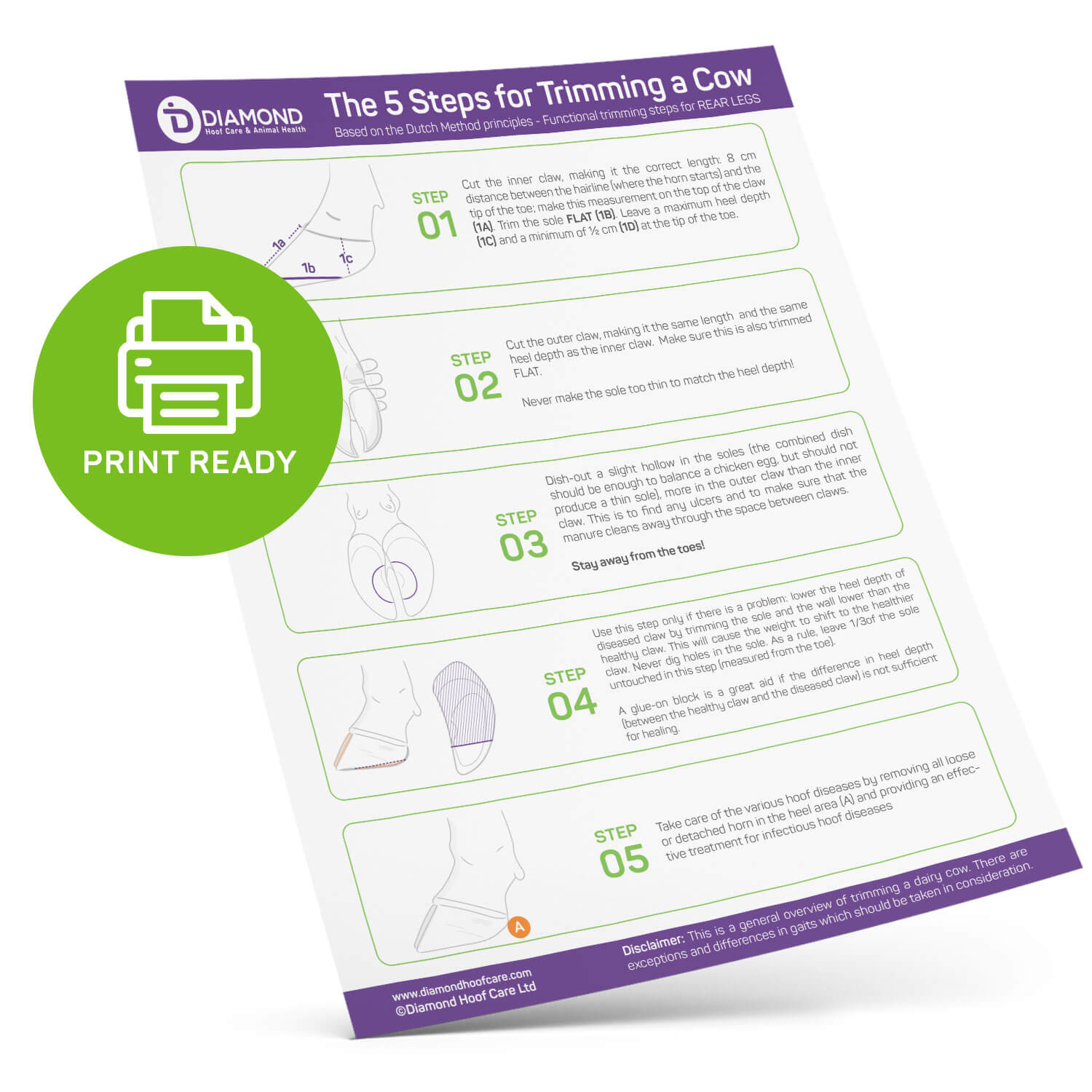
5 Steps to Trim Cheat Sheet
Collaborating with Veterinarians for Lameness Control
Veterinarians are an indispensable resource in the fight against lameness. Collaborating with veterinarians can help farmers develop comprehensive lameness control programs tailored to their specific needs. Veterinarians can conduct regular herd assessments, provide expert advice on treatment protocols, and assist in data analysis for evidence-based decision-making. It’s like having a trusted partner by your side; veterinarians contribute their expertise towards achieving lameness reduction goals.
In addition to their role in treatment and control, veterinarians can educate farmers on the importance of genetics in lameness susceptibility. By selecting breeding stock with strong hoof health traits, farmers can gradually reduce the prevalence of lameness in their herds over time. This long-term approach, combined with effective lameness management strategies, can lead to sustainable improvements in cow welfare and productivity.
Furthermore, veterinarians can help farmers stay updated on the latest research and advancements in lameness prevention and treatment. By attending workshops and conferences organized by veterinary associations, farmers can gain valuable knowledge and network with experts in the field. This continuous learning and collaboration foster a culture of innovation and improvement in lameness management practices.
Conclusion on Key Strategies
Lameness is a widespread issue on dairy farms, but with dedication, data analysis, and daily treatment, farmers can significantly reduce its prevalence. Implementing best practices, such as proper hoof care, nutrition management, and comfortable housing, can also play a pivotal role in preventing lameness. Moreover, reducing lameness not only improves cow welfare but also has a positive economic impact on farm profitability.
Training employees and collaborating with veterinarians further enhance lameness management efforts, allowing farmers to identify early signs of lameness and provide effective treatments. By adopting these strategies and investing in hoof health, dairy farmers can create a healthier, happier, and more profitable environment for their cows. After all, a hoof in good shape is a step towards success on the farm.
